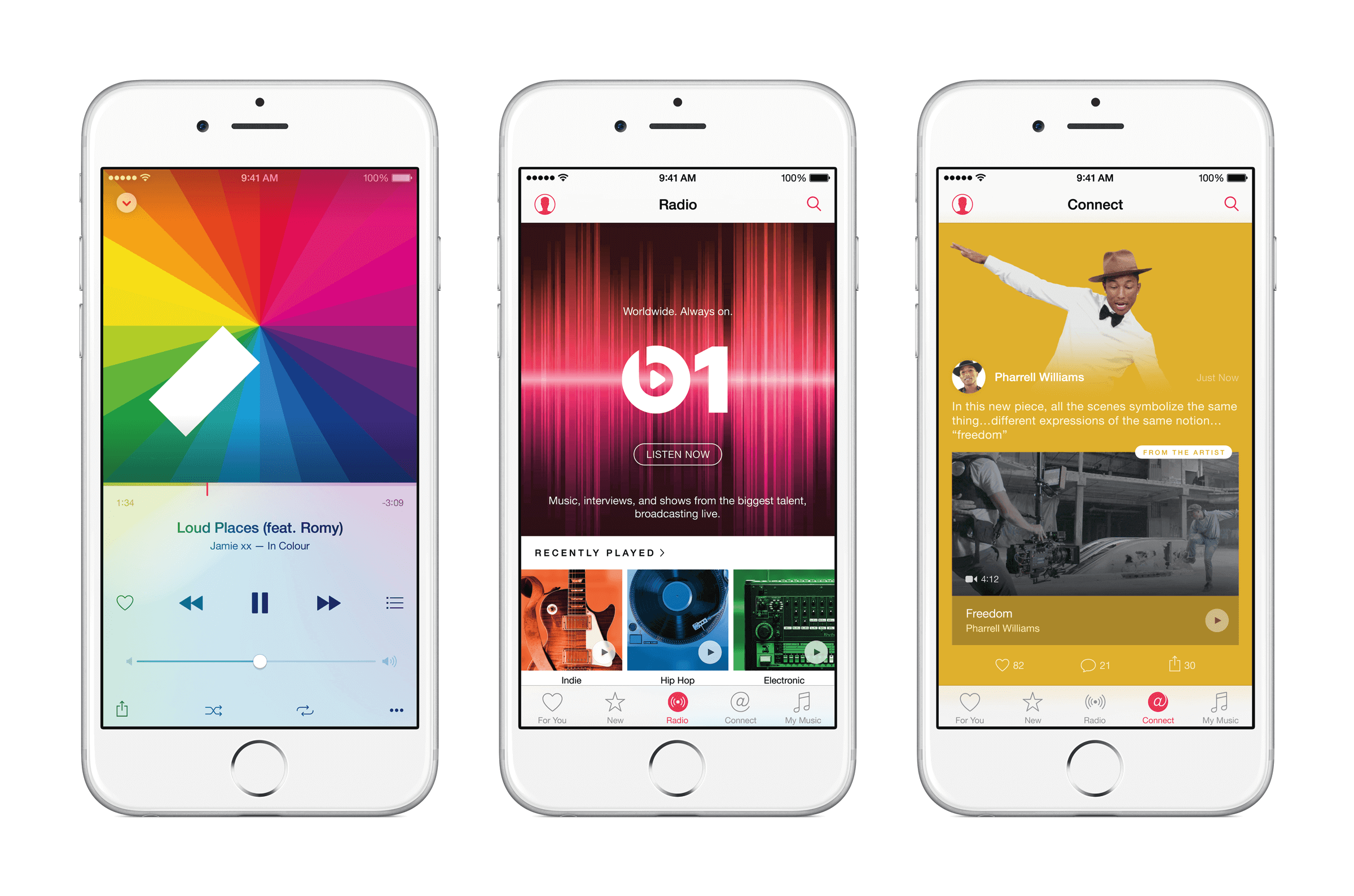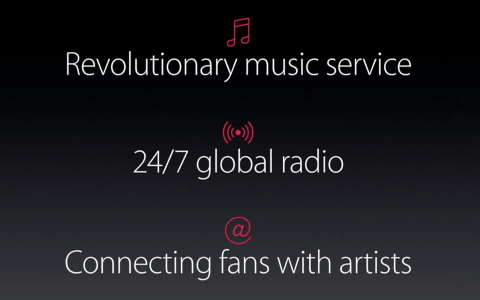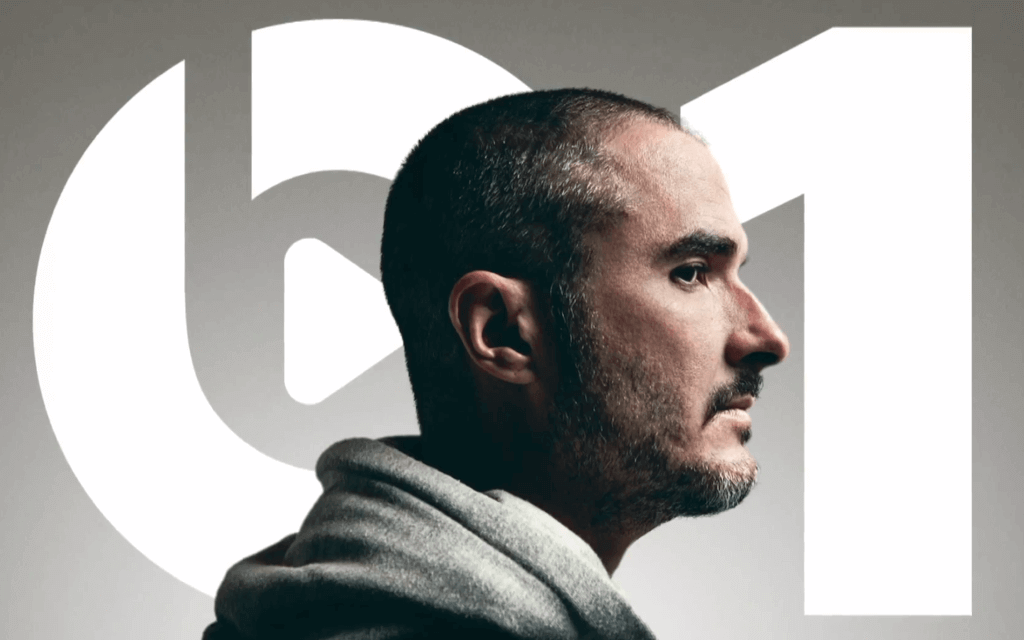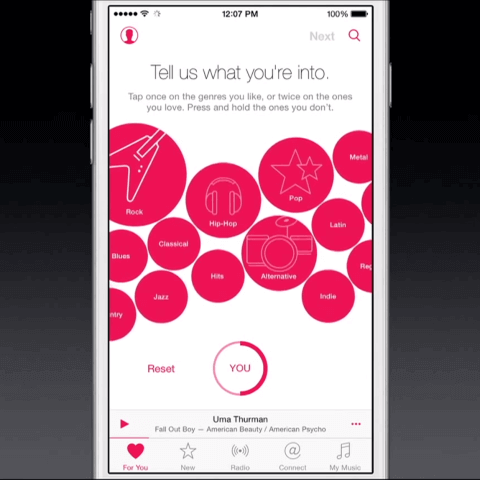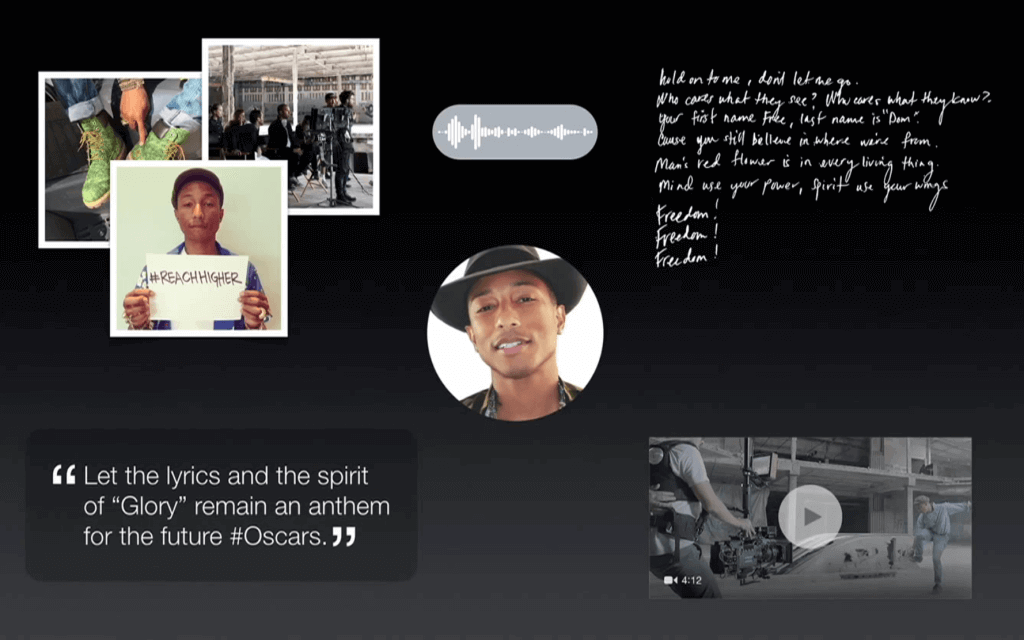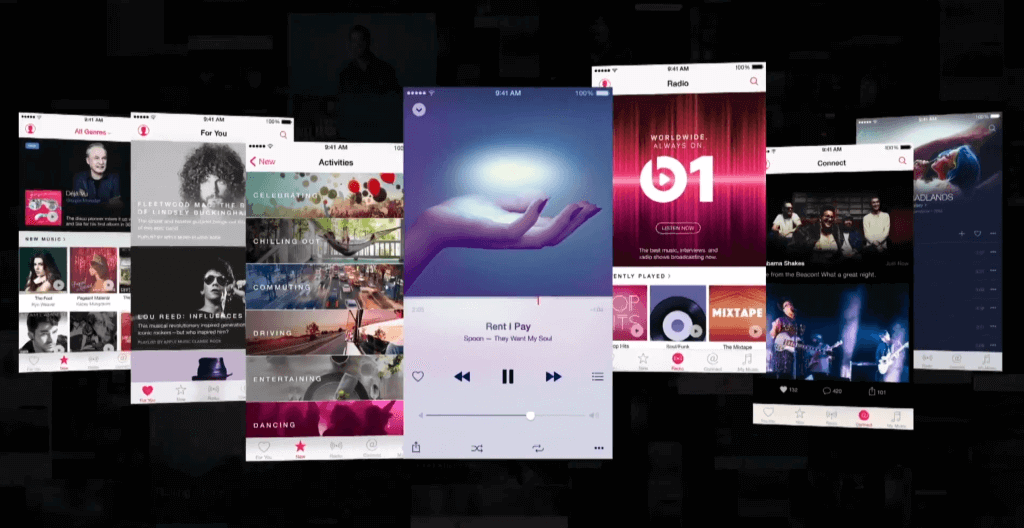Apple has finally unveiled its long-awaited music streaming service to compete with the likes of Spotify and Pandora, set for release on June 30. What can we expect from Apple Music, and how will it fare in a crowded marketplace?
Apple Music promises to be an amalgamation of three services in one: on-demand music streaming, a worldwide 24/7 live radio station, and a new artist-led social media platform. It’s a pretty significant announcement; this year’s big “one more thing” sucker-punch keynote reveal at WWDC. Apple CEO Tim Cook says it will “change the way you experience music” – could he be right? Here, we’ll take a closer look at the key features that could make or break the launch.
Catalogs
The number of tracks available is key to a music streaming service, and it’s one of several areas in which Apple can use the might of iTunes to its advantage. Apple’s online music store has redefined the ways we listen to music since it was launched 12 years ago, and it boasts the largest mp3 catalog in the world – a whopping 43 million tracks. However, not all of these will be licensed for streaming and reports suggest that the Apple Music catalog will have ‘only’ 30-40 million tracks. That’s roughly the same as the other leading services, though a million or two tracks either way could be significant.
It will be interesting to see specifically which big artists are available through the service. Taylor Swift and Radiohead’s Thom Yorke have both pulled music from Spotify (the latter describing it as “the last desperate fart of a dying corpse,”) but will their reluctance spread to Apple Music? More importantly, could Apple Music be the first streaming service to negotiate a deal with all-time bestsellers The Beatles? The Fab Four’s back catalog is exclusively available for download through iTunes, which might give Apple the leverage it needs to bag their streaming rights too.
Platforms
Apple Music will be available on all the usual iOS devices, but crucially the company is also launching an update to iTunes for both Mac and Windows computers which will include access to the service – desktop listeners rejoice! Somewhat surprisingly, Apple is also working on an Android app that will launch later this year. Amongst all the talk of an Apple-centric ‘ecosystem’ (read: walled garden), it’s good to see the company finally developing for rival platforms. It can only reach so many people without Android support.
Every notable streaming service so far also has a web-based interface, but Apple may buck the trend in an attempt to keep more people glued to iTunes. Yet there’s been no mention of any kind of web player yet – is this a missed opportunity from Apple or simply something it didn’t think important enough to announce? Additionally, Spotify and others have apps available on platforms like PlayStation and Windows Phone. Apple has no plans to cast the net that wide yet, sticking to more established devices for now.
Radio
Alongside its main streaming service, Apple Music will also be home to the first worldwide 24/7 live radio station, called Beats 1. It’s the only Beats Music branding that will remain after its takeover by Apple last year, and promises round-the-clock hand-picked music that “feels great.” The radio station will be broadcast from centers in Los Angeles, New York and London and fronted by popular DJs Zane Lowe, Ebro Darden and Julie Adenuga. Live manned radio is something that no other streaming service offers and it could set Apple Music apart from the competition.
That said, Beats 1 really feels like a separate service from Apple Music – especially considering it will be available (supported by ads) to non-subscribers. Despite Apple’s attempts to display Discover, Radio and Connect as a unified music service, it does feel a little like these extra features are merely add-on fringe benefits that won’t necessarily appeal to everyone.
Discovery
Apple Music will slowly learn what type of tunes its users are interested in, by analyzing your music collection and listening habits, and will recommend appropriate playlists and albums in the ‘For You’ section of the app. Almost every streaming service has some kind of ‘recommend’ feature, but it looks as though Apple is trying to go a step further to create the best discovery service out there.
Although the recommendations will be algorithm-driven, Beats co-founder Jimmy Iodine talked down automated radio stations and playlists. He was keen to stress the point that, like Beats 1, all playlists would be “curated” by music experts, to ensure a seamless flow of relevant, hand-picked tracks. He argues that “algorithms alone can’t do that emotional task,” and he has a point. What isn’t so clear is how much people will care.
Connect
The final piece of Apple’s holy trinity of features is Connect, a one-way social media stream allowing artists to share exclusive content (“lyrics, backstage photos, videos”) with their fans. It’s reminiscent of the highly forgettable flop that was iTunes Ping, launched five years ago to rapturous apathy. Connect could be more of a success if enough popular artists get on board, but it’s difficult to see the appeal when it’s already so easy to follow your favorite stars on Twitter, Facebook or Instagram.
One thing not made clear at WWDC is whether Apple Music will allow users to connect with each other – there was no mention of public playlists, or any social aspects allowing users to see what their friends are listening to. These are things that Spotify already does pretty well, and Apple should take note. Apple Music needs to make Connect more than just a one-way stream of pop star narcissism.
Features
A few key features that weren’t clear in the launch keynote have since emerged, and show how Apple Music will take some of the best selling points from its rivals and combine them into one single service.
From Google Play Music, Apple has nabbed the idea to allow users to upload tracks from their personal music collection to fill any gaps in the service’s library of songs, meaning they can stream from anywhere. So for those with a large collection of B-sides and rarities not found on iTunes – or who simply want to stream the Beatles albums they already own – this could be a really good solution.
Apple has also confirmed that subscribers will be able to download tracks for offline listening, taking a leaf out of Spotify’s book. This means your favorite songs and playlists can be saved to a device to be played even without access to the internet. Very handy and a key consideration for those with limited mobile internet packages.
Jay-Z’s streaming service Tidal offers super high quality streaming; the kind only music aficionados with expensive sound systems will appreciate. Apple has yet to specify the compression format it will use, though it’s unlikely to try to match Tidal’s high-fidelity service. For most users, their 256-Kbps AAC format is plenty good enough. This is a good example of Apple picking and choosing which rival features to incorporate in its Frankenstein’s Monster of the streaming world.
Marketing
Though late to the music streaming game, Apple has a clear advantage with iTunes: close to a billion existing users with credit card details in tow. Everyone who updates their iPhone or downloads the latest iTunes after June 30 will automatically have the Apple Music software. Add to that a generous three-month free trial, and it suddenly becomes very appealing to give it a try. Apple seem to be making it as easy as possible to sign up – they appreciate that people don’t like effort.
After the trial, a subscription will cost $9.99/month, in line with almost every competing music subscription service – Apple eventually decided to go with the industry standard after initially trying to undercut the market. Apple is also offering a very competitive family plan, which will cost just $14.99 for up to six devices. This discounted rate will work on the existing iCloud Family Sharing system where one ‘parent’ takes charge and pays for everything.
Apple need to make sure the switchover from alternative services is seamless; people won’t want to lose their existing playlists and favorites. As owners of Beats Music, that transition will be made simple, with no loss of content. How far Apple go in terms of making the switch easy for users of other services remains to be seen.
Conclusion
Apple has been quoted as aiming for 100 million subscribers – an incredibly ambitious goal, but you wouldn’t want to bet against it. Like the triple threat of features, ultimately the success of Apple Music rests on three things: if Apple can match the best features of its rivals, offer a broader catalog of music and make the transition from other services quick and painless, we could have a behemoth on our hands.
Of course, we’ll have to wait until the free trial dries up to really gauge how good of a launch Apple Music has. But if anyone can barge into an existing market and completely dominate, it’s Apple.
